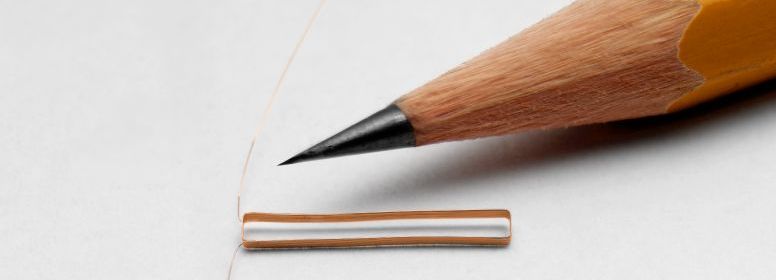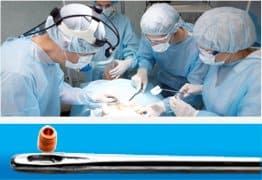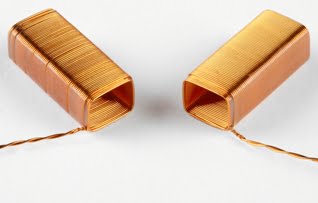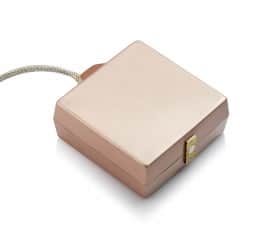Micro Coil Winding: The Future of Compact Electronic Devices.

One of the major challenges facing the mechanical designer of invasive medical devices is the need for miniaturization. Miniaturization serves several purposes; reaching otherwise inaccessible regions in the body, minimizing disruption of regular body functioning, minimizing energy consumption, and increasing the lifetime of implanted components.
These size constraints pose multiple challenges, both in the manufacturing and in the connecting of these components to each other and their support systems. Many of the designs of these devices rely on micro coils which in turn require advanced techniques for their winding and connections.
Medical Micro Coil Winding
Equipment used to wind regular-sized coils can’t be used to serially wind micro coils which require the development of specialized equipment. Using in-house engineering, Benatav has developed state-of-the-art methods and equipment which allows the winding of micro coils to an extent not possible before.
To manufacture a micro coil with as many as 2000 turns, you need to greatly reduce the thickness of the wire. The thinnest copper wire currently available is 8 microns (0.0003 inches). Benatav is one of the few companies in the world working with such fine wires, and we are working on producing insulated wires even smaller than 8 microns.
Benatav has developed advanced methods for handling wires at any diameter, down to the finest serially world manufactured size of 59 AWG (9 microns, 0.00035”). Handling wires which may be 5‑10 times thinner than a human hair is a non-trivial challenge, especially if the expected final shape of the wound coil is constrained by a long list of physical and environmental factors, and must meet very strict tolerance requirements.
Using our custom micro-machining technologies, we manufacture coils having over 1000 windings which are smaller than the head of a pin. However, such tiny coils pose further challenges when trying to connect the ultra-fine wires they’re made of.
Connecting Micro Wires
As micro coils serve as only one component in a larger system, their electrical connection to these systems poses additional challenges. Traditional, solder-based connections are not adequate for the task. Tin Heat-based connecting creates undesired side effects, such as oxidization of the connection and the region, inferior conductivity, low durability. As well as low yield during production.
Ultra-fine wires are so thin that you can’t weld or solder them using traditional methods as this, in most cases, destroys the wires. To overcome these problems, Benatav has developed a proven, cutting-edge, thermo-pressure technology to produce precise soldering with tight tolerances at very temperatures.
Benatav’s ultimate answer to all these connectivity challenges is found in our innovative thermo-pressure bonding technology. This technology enables connecting ultrafine wires with none of the previously mentioned drawbacks.
The molecular connections formed by this thermo-pressure bonding technology provide highly reliable, corrosion-free, and strain-free connectivity without any soldering, thus simplifying creating uniformity and lowering manufacturing costs. Thorough testing of the technology in a wide variety of customer environments, coupled with its implementation in several production processes, has proven its readiness for integration into mass serial production processes while meeting the standards required by medical applications, both of disposable products and life-long ones (for example, permanent implants).
Typical Medical Micro Coil Use-cases
A miniature coil manufactured by Benatav for example, may serve as the navigation component in a cardio-vascular catheter performing cardiac ablation which serves as a key element in a disposable catheter. This micro coil must be mass-produced with high and predictable quality at a reasonable cost.
Our technologies for winding micro coils and connecting them open up a vast array of possibilities to medical device designers. Miniature coils, for example, can be used to provide capabilities such as:
- Transferring control, monitoring, and logging data to/from miniature implants
- Transferring energy to implants requiring battery charging or electrical charge input to activate and operate their systems
- Radiating energy for RF treatments, heat treatments, or electromagnetic radiation-based treatments
- In-vivo magnetic navigation, employing a local or external magnetic field
Medical Micro Coil Applications
The applications that can benefit from miniature coils technologies and ultra-fine wire connectivity technologies include:
- Diagnostic applications: wireless communications with miniature implants serving as sensors, whether physiological (blood pressure, heartbeat), glycemic, or flow (blood, respiratory)
- Active implants applications: monitoring/controlling of miniature implanted pace-makers, or deep brain stimulation components in pain management implanted devices
- Therapeutic applications: end devices in electrophysiology treatments (cardiac, neural, brain) or electricity-based ablations (microwave and RF)
- Navigation and orientation applications: targeted drug delivery, targeted radiation catheters, stents positioning, highly-accurate ablations, implanted markers, inter-body tagging, as well as endoscopic, gastroscopic, colonoscopic, laproscopic, and other similar procedures
- Temperature measuring applications: chromel-constantan miniature thermocouple (type E), based on thermo-pressure molecular bonding technology
- Hearing aids: connecting micro-coils to their operating system on a PCB, using a mediating thicker wire, which can withstand soldering
Speak to us regarding your micro coil requirements
Benatav’s specialist technologies open up a limitless range of new possibilities to designers of miniaturized medical equipment and other industries.
Find out about the benefits gained using Benatav’s unique medical micro coil winding technology. As designers become more aware of our thermo-compression bonding, we foresee that the variety of applications for its use will become increasingly widespread.





